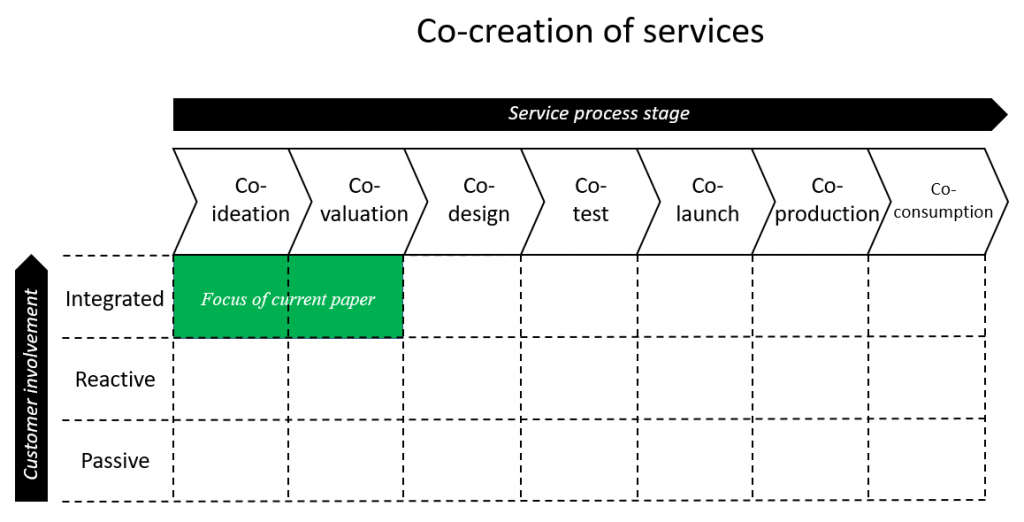As mentioned in an earlier post, some authors have suggested a view on the depth of co-creation. I find this an extremely important aspect, as it helps explain how customers are involved. This depth dimension adds a layer of involvement to the service stages view shown in definitions.

This combined view pulls together elements from ‘Co-creating services—conceptual clarification, forms and outcomes‘, ‘Service Design for Business’, ‘Schumpeterian Customers? How Active Users Co-create Innovations‘ and ‘The 7 Principles of Complete Co-creation‘. In this combined view, the X axis depicts the service stage, while the Y axis depicts customer involvement. This latter ranges from passive through reactive to integrated.
- Passive category includes practices where user is not aware of her participation (tools such as e.g. data analytics, observation, A/B testing), or not aware of the goal of her involvement (e.g. vague goal such as “service improvement”).
- Reactive category is where customer participates in full knowledge of both her role and participation’s goal, but receives little or no follow-up, and acts rather reactively (tools such as e.g. diary studies, exploratory interviews, prototype testing, surveys).
- Integrated category is where customer is involved as an equal partner, and has a view of the bigger picture (e.g. contribution to open-source software). Thus the focus of current paper is further specified as being in the “integrated co-ideation” and “integrated co-valuation” sections – the areas where Swiss direct democracy processes are strongest.
Next batch of posts will dive deep into the Swiss direct democracy – hold on to your hats!





















[…] […]
[…] […]
[…] […]